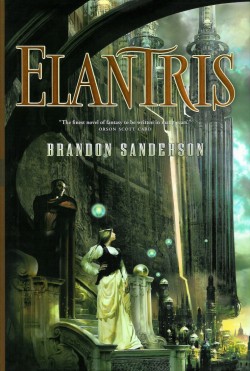Elantris is a standalone novel by Brandon Sanderson, in fact his first published book. It takes place in and around the ancient city Elantris which used to be a place of magic and peace, its inhabitants immortal and beautiful. Food, healing and any material good could be created with a handwave. Any Arelonian could be taken by the Shaod and become an Elantrian—a god, effectively—for eternity. But “eternity ended ten years ago”1. Since then, Elantrians have been looking like zombies and their magic has not been working. General populace panicked, killed as many of the obviously cursed as they could and established a new kingdom. But the Shaod continues to turn people of all kinds into walking dead.
Raoden2, the crown prince of Arelon, awakens one morning to find himself an Elantrian. He is immediately thrown into Elantris as custom dictates; to cover up the shame he is declared dead, killed by a hideous disease. He discovers that his transformed body can not die; the downside is that wounds do not heal either and hurt forever. Also, not needing food is not the same as not feeling hungry; in a place without food, most are plagued by a constant hunger. Therefore, most Elantrians have descended to a primal state, preying on the weak to ease their pains for even a moment. Raoden refuses to give up his humanity and tries to help his peers to overcome constant hunger and increasing pain.
Raodens bride-to-be Sarene arrives in Kae, capital of Arelon, just in time to find her spouse diseased. Contract forces her to be King Iadon’s daughter nonetheless for political reasons. Smart and emancipated—but also naive—Sarene observes that Arelon crumbles on the inside and is threatened by the fanatic emperor of Fjorden from the outside and decides to make it her job to safe the kingdom. She ends up plotting revolution with Raodens old comrades who all believe him dead. Read more »
- This is the prologue’s last sentence. I think it is a great one; it made utterly sure I would read on. ↩
- Have a look at the pronunciation guide. ↩












